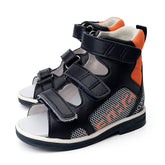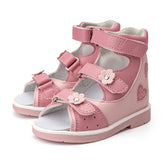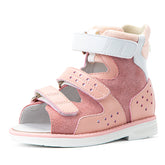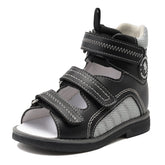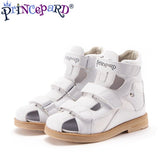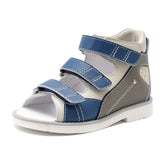Understanding O-Shaped and X-Shaped Legs in Children: Causes, Risks, and Effective Treatments
What Are O-Shaped and X-Shaped Legs?

O-shaped legs (genu varum) and X-shaped legs (genu valgum) are common lower limb alignment conditions in children. While mild cases may resolve naturally as the child grows, severe or persistent cases may require intervention to prevent long-term complications.
- O-Shaped Legs (Genu Varum): This condition occurs when the legs curve outward at the knees while the ankles remain close together, creating an "O" shape. It is often present in infants and usually improves by age 3. However, if it persists beyond this age, it may indicate an underlying issue such as rickets or abnormal bone development.
- X-Shaped Legs (Genu Valgum): In this condition, the knees touch or come too close together while the ankles remain apart, forming an "X" shape. This is common between the ages of 3 and 7 and usually corrects itself. If the condition persists, it can lead to joint stress and mobility issues.
Signs of O-Shaped and X-Shaped Legs in Children
- O-Shaped Legs:
- Noticeable outward curve of the knees when standing
- Difficulty keeping legs straight
- Increased stress on the ankles and feet
- Possible foot misalignment (such as flat feet or valgus feet)
- X-Shaped Legs:
- Knees touching while the lower legs angle outward
- Difficulty maintaining proper posture when standing or walking
- Increased pressure on the knees and hips
- Frequent tripping or difficulty running
Causes of O-Shaped and X-Shaped Legs
- Physiological Growth Patterns: Some degree of bowing or knock-knee alignment is normal in early childhood.
- Nutritional Deficiencies: Lack of vitamin D and calcium can weaken bones, leading to improper leg development.
- Genetic Factors: Family history may play a role in persistent cases.
- Improper Walking Posture: Walking with incorrect weight distribution can contribute to leg misalignment.
- Medical Conditions: Rickets, bone dysplasia, and Blount’s disease can cause abnormal leg alignment.
Potential Risks of Untreated O-Shaped and X-Shaped Legs
According to medical research by orthopedic surgeons at the Medical University of Vienna
If severe cases of O- or X-shaped legs are left untreated, they can lead to:
- Joint Pain and Arthritis: Uneven pressure on the knees and ankles may increase wear and tear.
- Postural Imbalance: Misalignment of the legs can affect the hips and spine, leading to poor posture.
- Gait Abnormalities: Difficulty walking or running efficiently.
- Increased Risk of Injuries: Misalignment can strain muscles and ligaments, leading to frequent falls or sprains.
Effective Treatments for O-Shaped and X-Shaped Legs
Treatment varies depending on severity. In mild cases, natural growth correction is sufficient, but intervention may be needed for persistent or severe misalignment.
1. Physical Therapy & Exercises
- Strengthening exercises for leg muscles to improve alignment.
- Stretching routines to enhance flexibility and mobility.
- Balance training to reduce stress on the knees and ankles.
2. Orthopedic Shoes & Insoles
Specially designed orthopedic shoes can help support proper leg alignment by:
- Providing arch support to distribute weight evenly.
- Stabilizing the ankles and knees to prevent excessive inward or outward tilting.
- Offering shock absorption to reduce stress on joints.
3. Braces & Supports
In moderate cases, braces may be recommended to gradually correct leg alignment. These devices help guide bone growth and support the knees and ankles.
4. Surgical Correction (For Severe Cases)
For extreme cases that cause pain and mobility issues, surgery such as guided growth or osteotomy may be necessary to realign the bones.
Why Choose PrincePard Orthopedic Shoes?
At PrincePard, we specialize in orthopedic shoes for children designed to support proper leg alignment and foot health. Our high-arch corrective insoles, ankle stabilization technology, and shock-absorbing soles provide the ideal non-invasive solution for managing O- and X-shaped legs.
Proven Results: Our research shows that children who wear PrincePard orthopedic shoes experience significant improvement in leg alignment and walking posture over time.
Explore our collection at www.princepard.net and give your child the best support for healthy leg development!


